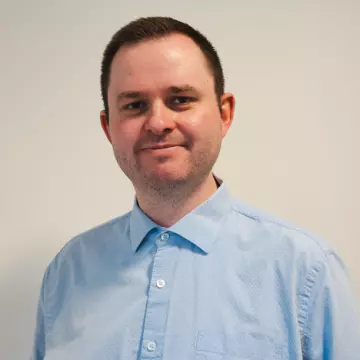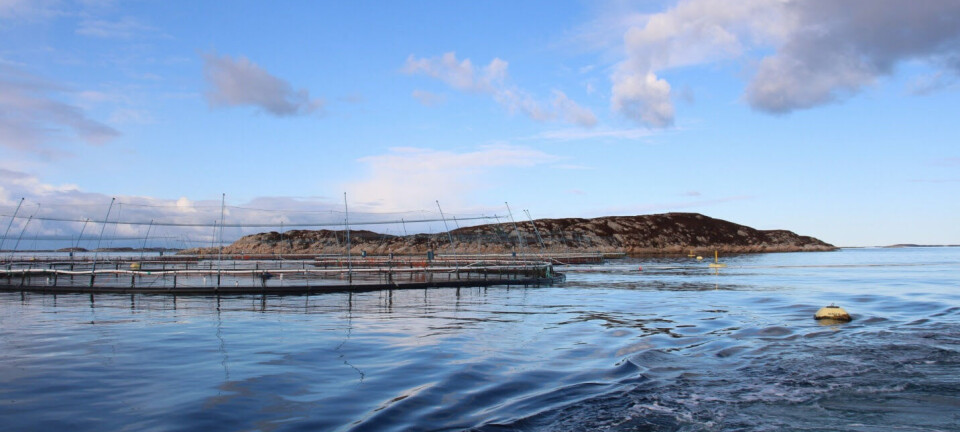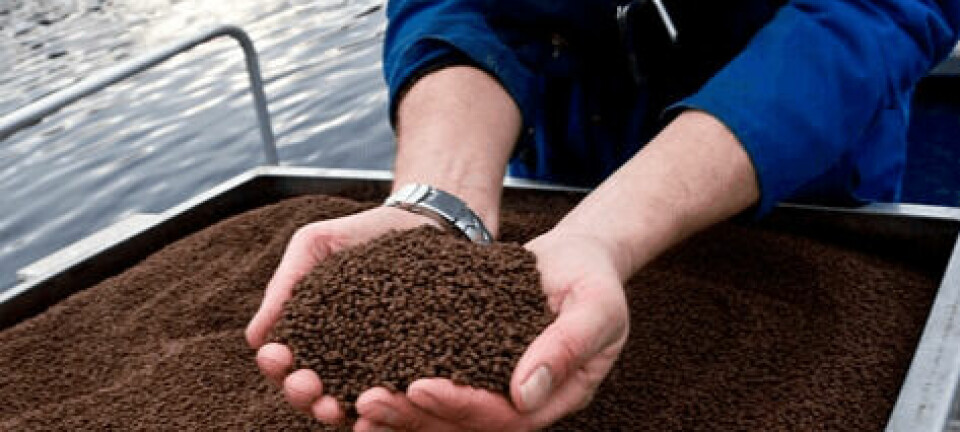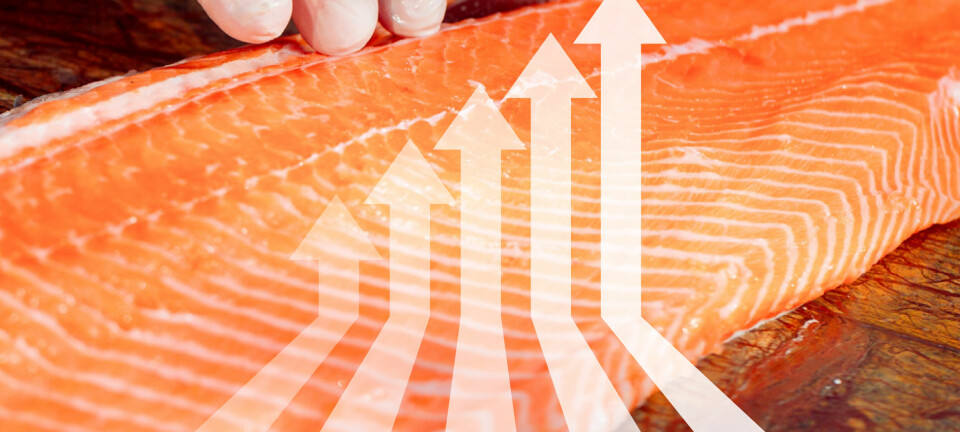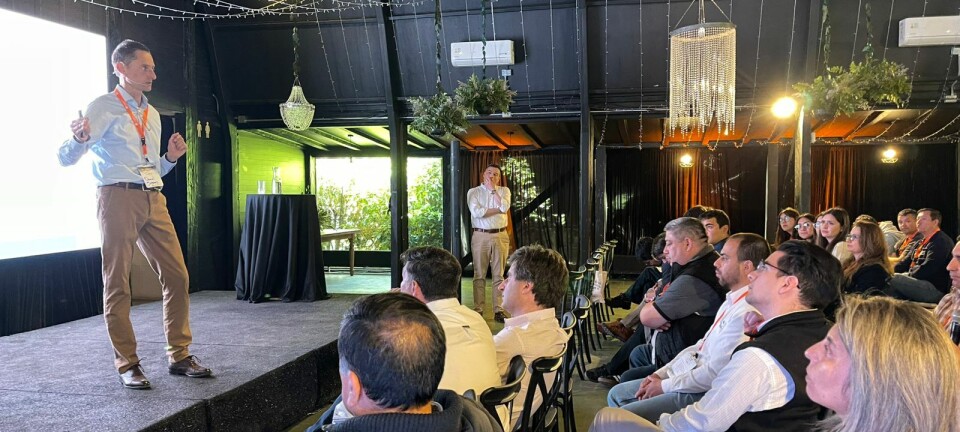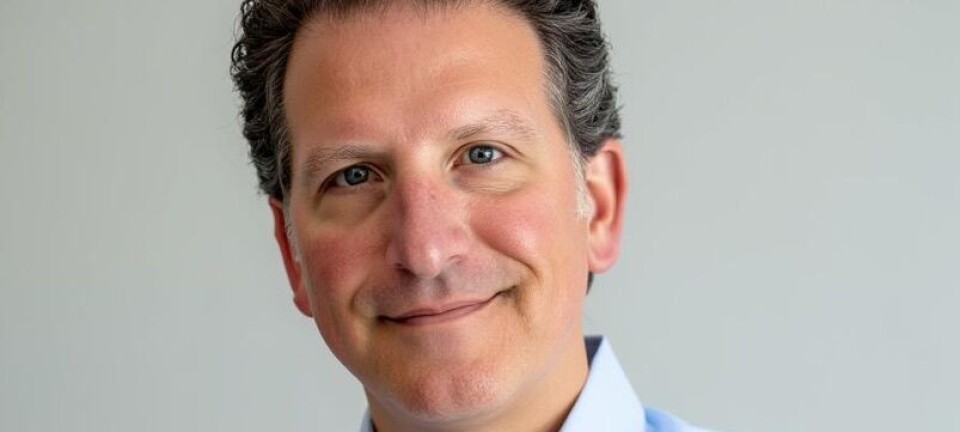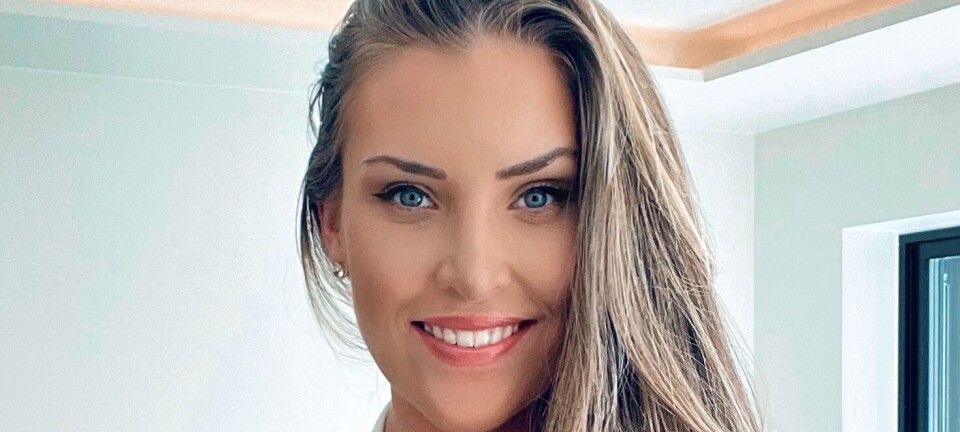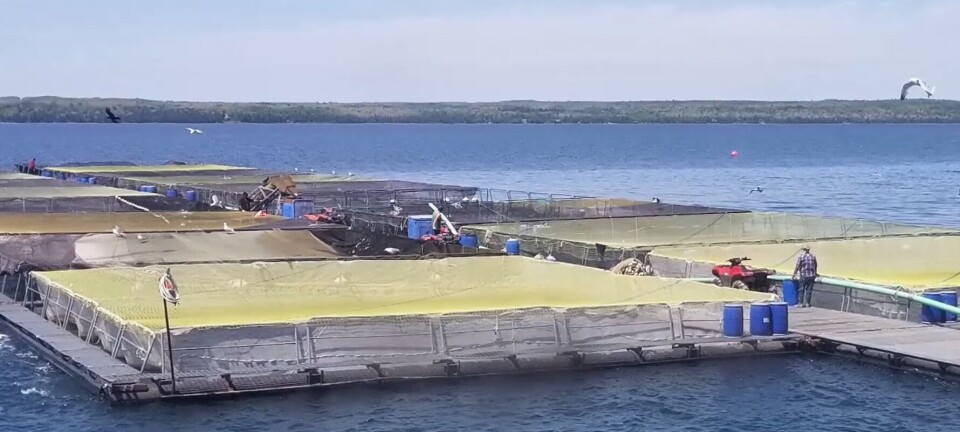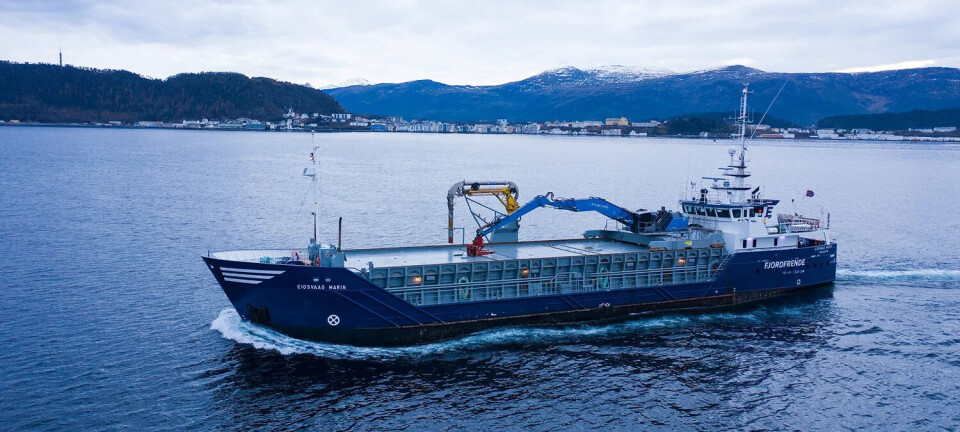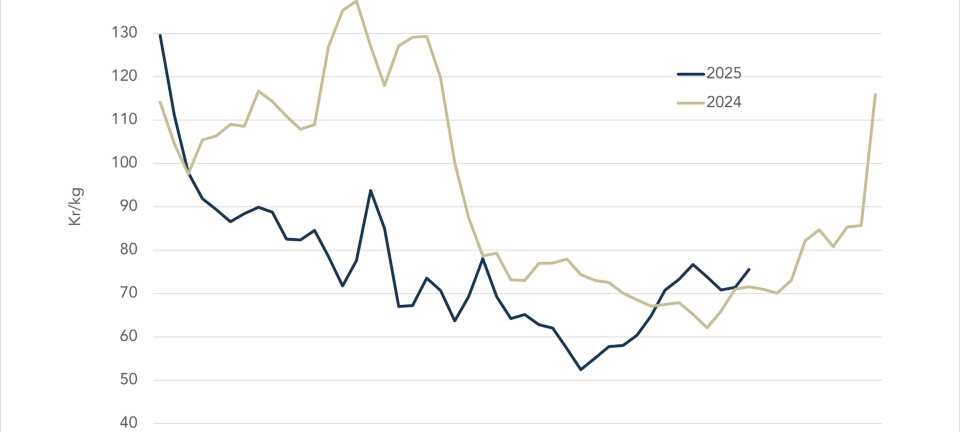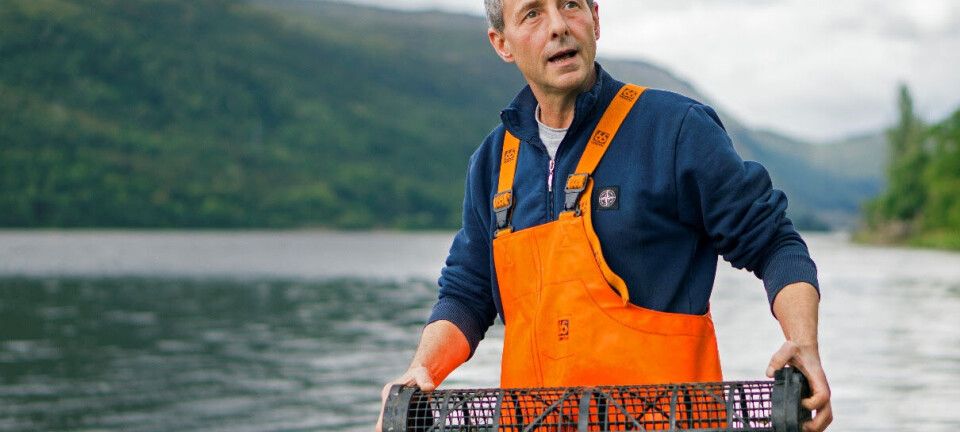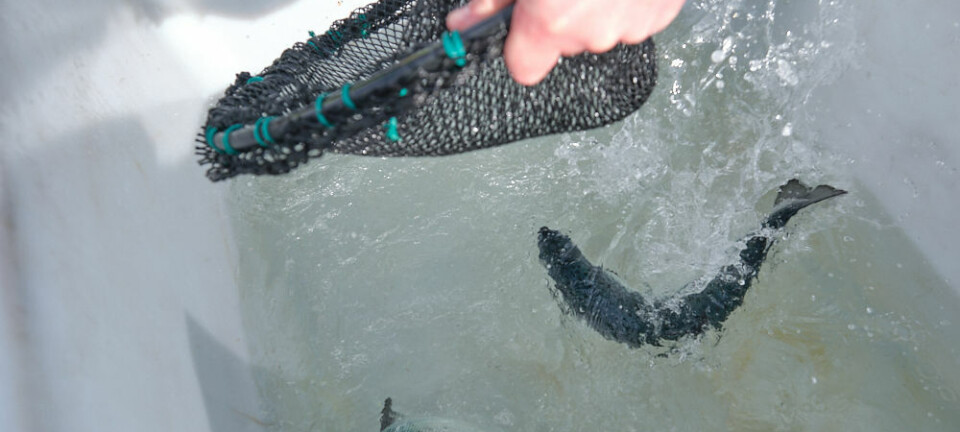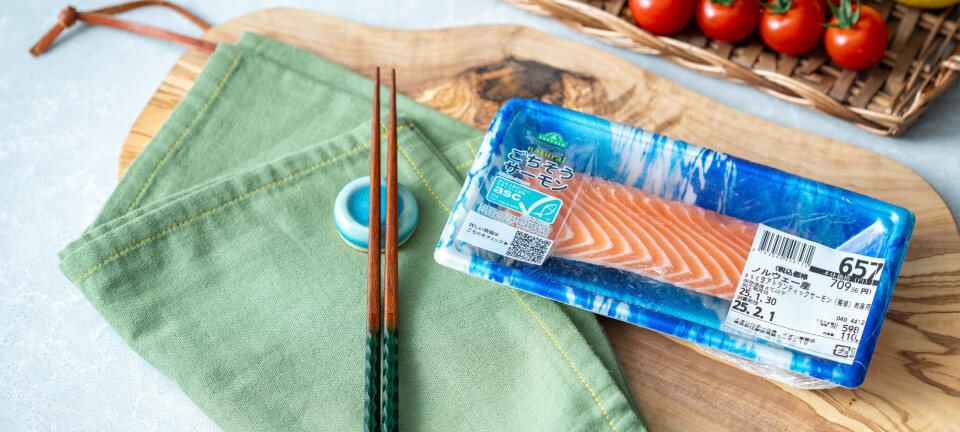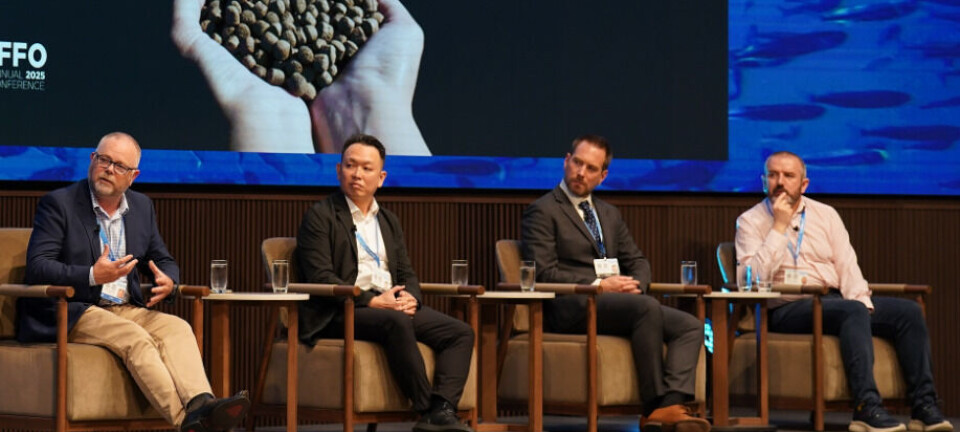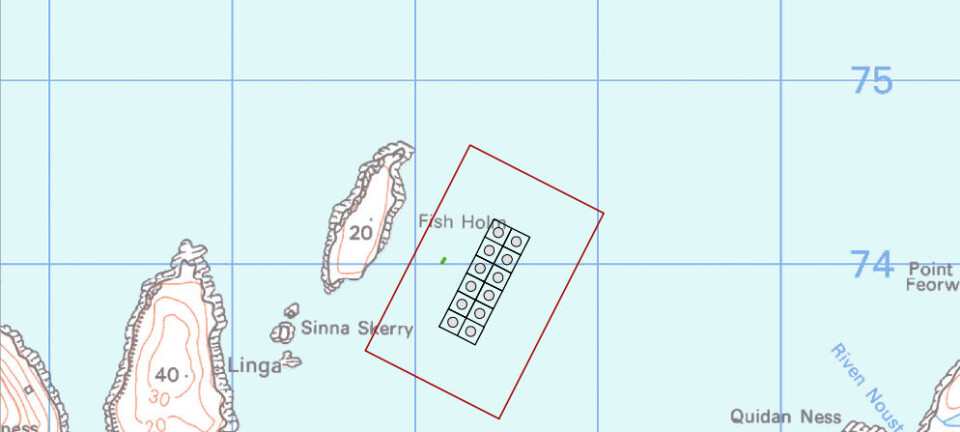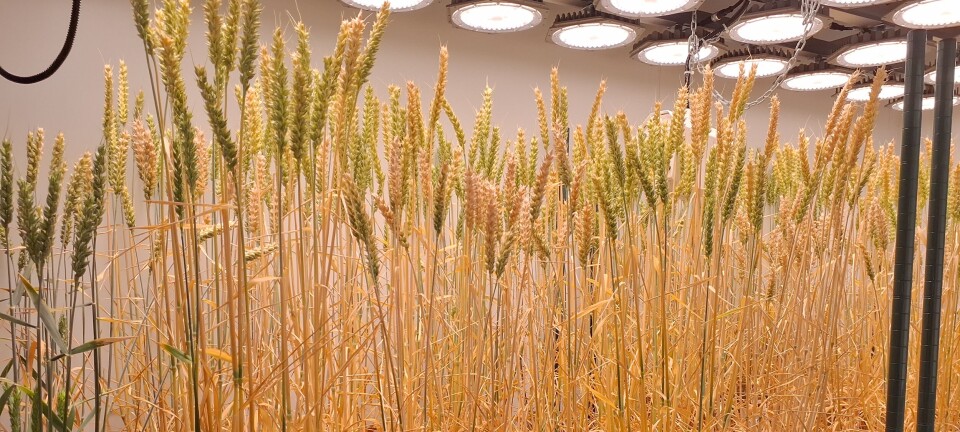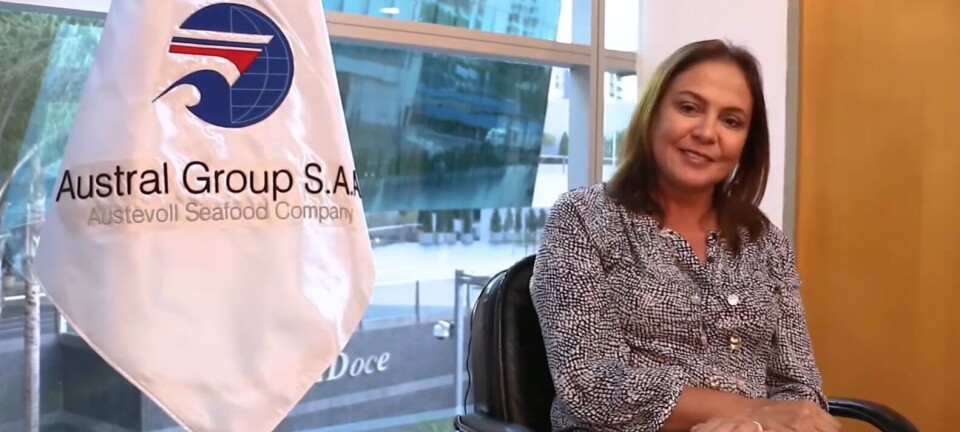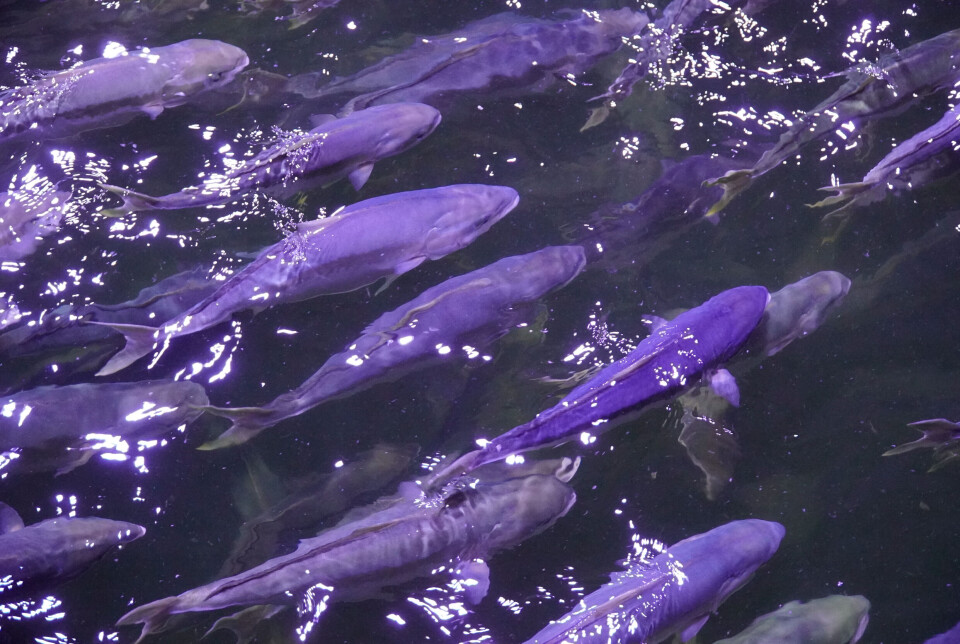
Switch to kingfish is going swimmingly in Fredrikstad
A move away from salmon to a warm water fish is paying off for a Norwegian land-based operation, journalist Ole Andreas Drønen discovered on a visit to the facility in June
Outside the premises of Nordic Kingfish Fredrikstad (formerly Fredrikstad Seafoods) we meet Bernt Olav Røttingsnes, who is the general manager of Nordic Aquafarms. From 2019 to March 2023, land-based salmon has been produced at the site, but when LandbasedAQ visited, the company was just weeks away from harvesting yellowtail kingfish (Seriola lalandi).
“I would say that the production with salmon worked very well. The reason we don’t do it anymore is because the scale is too small. Producing salmon requires more than just having 1200-1300 tonnes, which is our capacity here.”
The company still fundamentally believes in land-based salmon, although its own plans for a 33,000-tonne land-based salmon farm in Belfast, Maine, has been stalled for years by legal moves by a local opposition group.
“You (the industry) will achieve that. It works well, but it requires the right locations,” emphasises Røttingsnes.
From 14 to 24 degrees
Nordic Aquafarms has produced yellowtail kingfish in Denmark since 2017.
“In the autumn of 2022, we decided that we will drop the salmon and instead focus on yellowtail kingfish here in Fredrikstad. We used the time from the autumn to harvest what salmon we had, then we spent from March to September last year altering the facilities.”
Røttingsnes says that there was not much that had to be changed, but the company went from producing at 12-14 degrees to 23-24 degrees.
“The biggest difference between salmon and yellowtail is from 0-5 grams, because it is a marine species which feeds on live feed from day one. When you have made it approximately 5 grams, then it is a species that is very suitable in a RAS (recirculating aquaculture system) facility,” he explains.
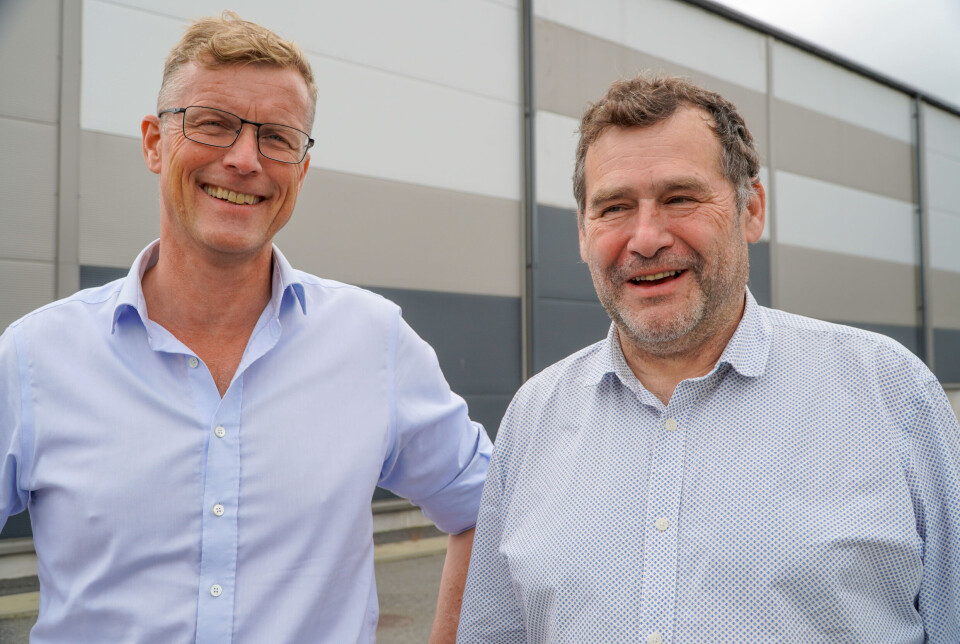
It's a fairly robust species, isn't it?
“It is very robust, and there is little mortality in the plants. There is no vaccination of the fish, no use of medication, and we have had no diseases. We know why you get hydrogen sulphide in the plants, of which there have been far too many episodes at other plants. You have to be paranoid about such things, and keep a close eye on them.”
Only uses seawater
The company gets the water that goes into the land-based facility from the Glomma, which is Norway’s longest river. At Fredikstad, close to the mouth of the river, the water in the Glomma is divided into two parts, with sea water at the bottom and fresh water at the top.
“As far as possible, we only produce in seawater. The facility is constructed on the basis that you take sea water and fresh water and create a brackish water. The theoretically correct thing is said to be the production of salmon at 12–13 ppt (parts per thousand) and not 30. But our experience is that if you are going to have a good product over time, and which is to compete with what happens in the sea, in terms of quality you must have produced in sea water.”
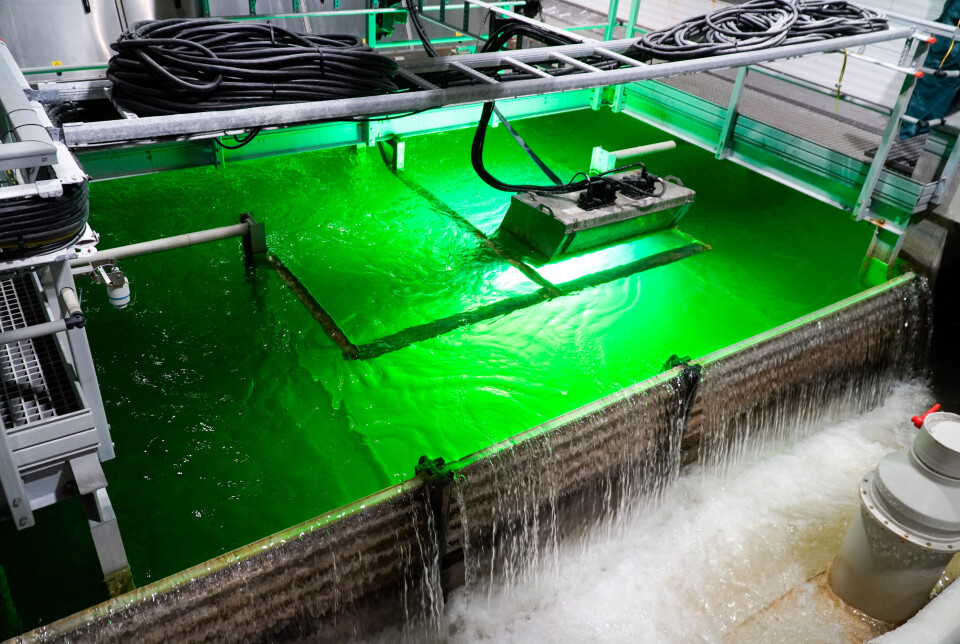
Nordic Kingfish Fredrikstad is also currently upgrading the water intake.
“Today we use ozone and UV filtration to clean the water, and we will have sand filtration and even more ozonation in the future. Internally in the facility we have a moving bed biofilter, particle filter (drum filter), UV and CO₂ remover. That’s what we base our technology on.”
The sludge and particles are pumped on to a sludge department. While the purified water goes back into the plant, the sludge goes into containers which are used in a biogas facility.
Will produce 3,000 tonnes
In Northwest Jutland, Nordic Aquafarms has a hatchery and broodstock facility. It also has a new nursery at Hanstholm in Denmark.
“We get the fish of 400-500 grams, by tanker from Denmark. In the grow-out department in Denmark, the fish is put in when it is up to one kilo.”
The company is also planning a kingfish RAS on the Samoa Peninsula in Humboldt County on the coast of northern California, where there is already good existing infrastructure.
At the facility in Fredrikstad, the company has two RAS2020 modules from Veolia Water Technologies, which have an inner and an outer ring, where the fish swim in round countercurrent tanks.
“We put the smallest fish in the innermost ring, and when it reaches a certain size, it is moved out to the outer ring, and stays there until it is harvested.”
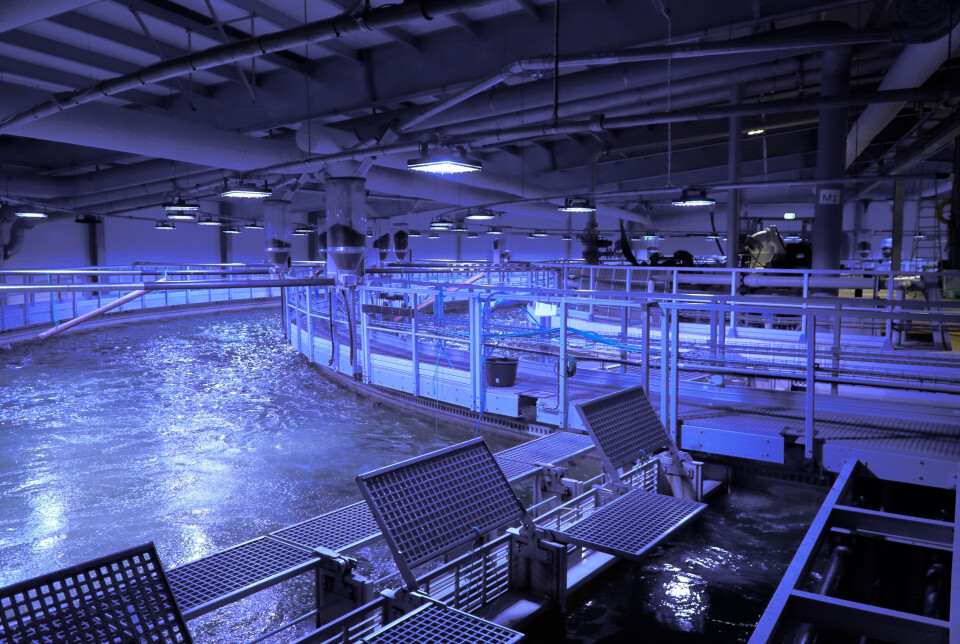
How big are the fish when you harvest them?
“When they pass 3.4 kg on average. You have some smaller fish and some larger ones, and this is a market that demands both,” explains Røttingsnes.
Is it a fish that is easy to sell to the market?
“We are going to go from 500-600 tonnes to 3,000 tonnes in a fairly short time, and then we have to develop the market as well, so that it becomes an important part of what we do. But it is a fantastic product. Yellowtail kingfish is very popular around the Mediterranean and the biggest market for us is Italy.”
In full production, the company will always have 200-250 tonnes in the facility, and in Fredrikstad they will produce between 1200-1500 tonnes of fish a year, with the rest coming from Denmark.
A fish for Michelin chefs
Yellowtail kingfish is a very popular fish to use for sushi, and the species has been served at Renaa in Stavanger, which recently received its third Michelin star.
“They have had it delivered from us in Denmark. You can also find it at Alex Sushi in Oslo, among other places. Here at Fredrikstad, we will only begin harvesting in a few weeks. The fish is great to fry, but as a raw product it is absolutely delicious. If we manage to take 10% of the sushi market, we will be very satisfied.”
Røttingsnes also says that as long as the fish are produced in sea water, there will be no problem with the “off taste” of geosmin either. If fresh water enters the facility, he emphasises that the risk of this increases significantly.
The company won’t compromise on the taste of the fish. Therefore, it will sell from Denmark in periods when the river mix means it doesn’t have sufficient sea water in the plant. For three to four days before harvest, the fish are also placed in purging, which acts as a starvation cage.
“Our experience is that if you first get a bad taste in the fish, it takes a long time to get it completely out of the system. It is important to have a good product in the first place.”
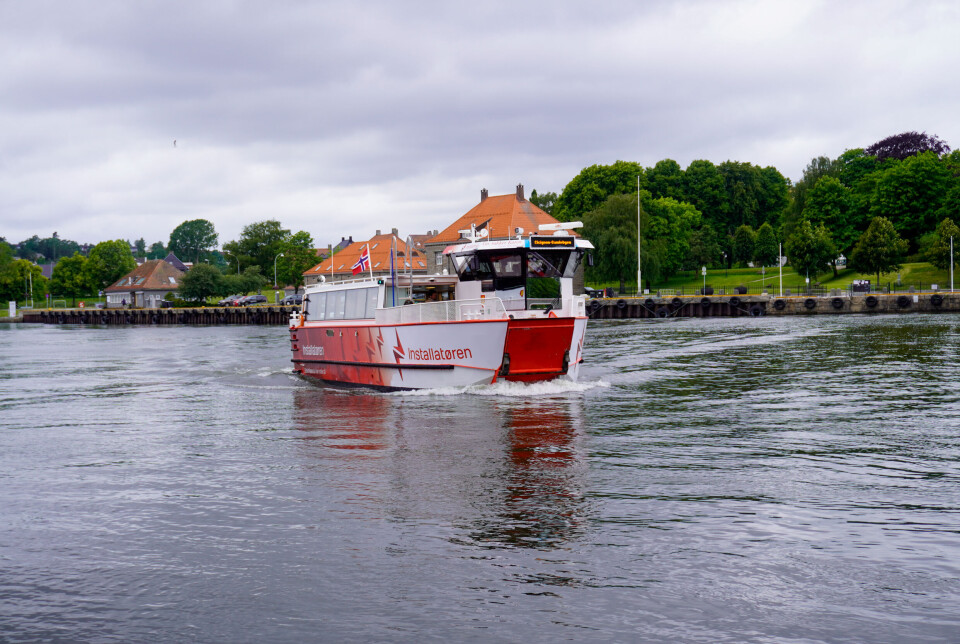
Independence is gold
The company believes that it has a big advantage in having its own broodstock, and is not dependent on any other players.
“We have 250 broodstock weighing up to 20-30 kilos and are actively working on the development of broodstock and genetics. It is a big, beautiful fish, and we are in very early generations compared to the salmon. The genetics have developed very positively for the salmon, and that will also happen here. We have only just begun to scratch the surface when it comes to the development of genetics.”
Røttingsnes says the company has been contacted by other fish farmers who have asked to buy fry from the company in Denmark.
“It is completely out of the question. We have no reason to help anyone establish themselves. We will, as long as we can, develop this on our own.”
Weekly harvests
Nordic Kingfish Fredrikstad will soon be harvesting weekly from the land-based facility.
“It will be important for us to always be present in the market, and we will also slaughter several times a week. When we have reached 3,000-tonne capacity, we will harvest between 50-60 tonnes weekly, combined, from Norway and Denmark.”
If the company is to increase capacity even more, it will be easiest and cheapest for it to expand in Denmark, where it already has broodstock and a hatchery. Røttingsnes says that in Denmark, the authorities are also less concerned with detailed regulations and making things difficult for the industry.
“In Denmark, the authorities have a desire to develop industry. Until recently, Hanstholm was Denmark’s largest fishing port, and there is a great deal of focus and knowledge on seafood. It is a very suitable place for us to be able to expand.”
Lower electricity bills
After the company scrapped the salmon, and switched to yellowtail kingfish, electricity consumption has also decreased.
“It has been a somewhat surprising experience for us,” says Røttingsnes. “When we produced salmon, we sometimes took in four-degree water from Glomma. Even with ice cold water, we had to use the cooling system to keep the temperature at 12 degrees. Fish, pumps, and equipment cause a lot of heat. All year round, the cooling system ran, while now it is the opposite.”
Røttingsnes says that they don’t have to think about it getting too hot, and it’s much cheaper to heat water than to cool it down, so energy consumption goes down.
“We are quickly talking a few kilowatts per kilogram of fish in lower energy use, so that is very positive. It is also easier to find environmentally friendly heating methods than environmentally friendly cooling methods. Now in June, it naturally stays at the temperature we want. We recently had a period where we had to increase the replacement of the water, simply to keep the temperature down.”
Thumbs up from Japan
Nordic Kingfish Fredrikstad was also recently visited by a Japanese inspector who has given the company approval to use Ikejime, a special way of slaughtering which should provide better quality and reduce stress for the fish. The plant in Denmark already had the approval, and now the facility in Fredrikstad, which has a small slaughterhouse attached to the plant, has it too.
The feed that the fish get comes from BioMar and contains slightly more protein than the feed for salmon, so it is a slightly different recipe. The feed conversion ratio is still slightly higher than for salmon, between 1.3 and 1.4. The fish are fed once a day at the facility.
“In a few years there will also be better feed, better genetics, and we will have more experience.”
What will your production costs be then?
“At 3,000 tonnes, it will be around NOK 100 per kilo. But production costs will eventually fall. A large part of the production cost in a land-based facility is fixed costs. It’s not the first kilo you take off that’s exciting, but the last one,” Røttingsnes emphasises.
And how much can you sell the fish for?
“This is a product for which we have had an average price in recent years of around NOK 200 per kilo (£14.49 at today’s exchange rate). If more and more fish enter the market, we will see how it develops, but it is a premium product. During the second half of this year, we shall be profitable in operation.”
